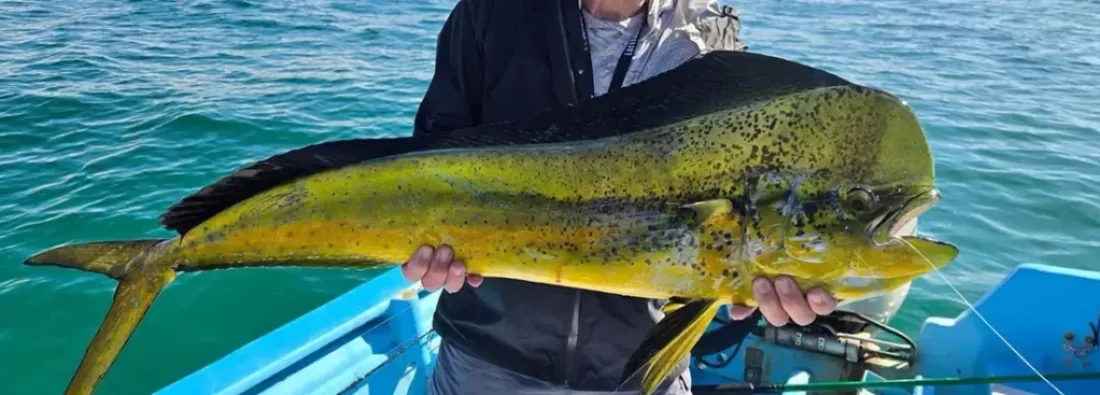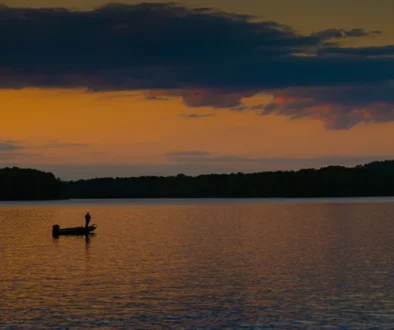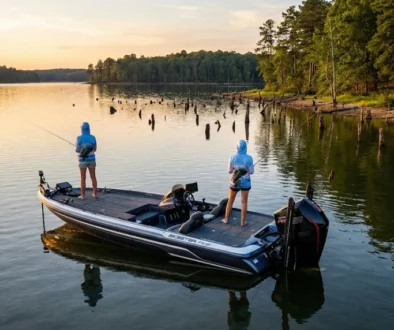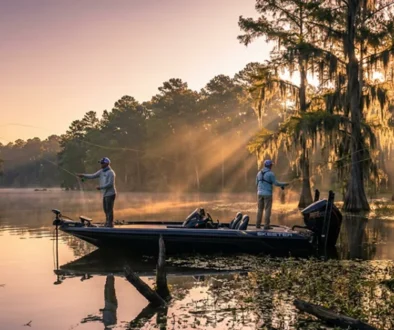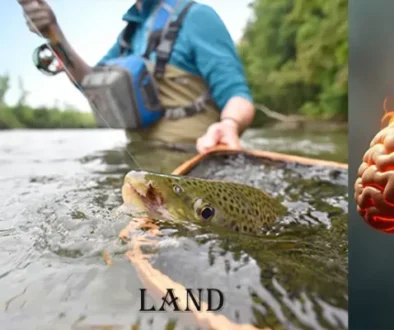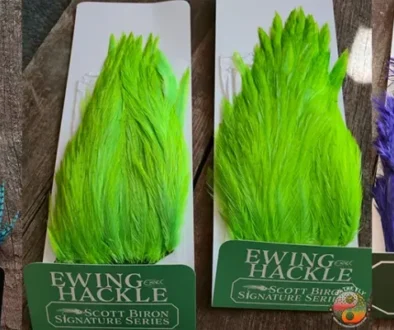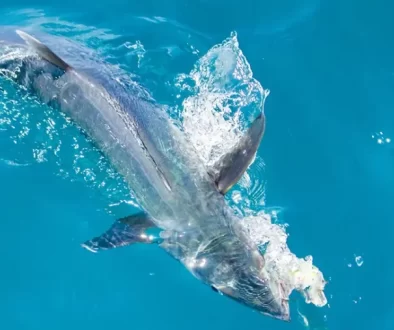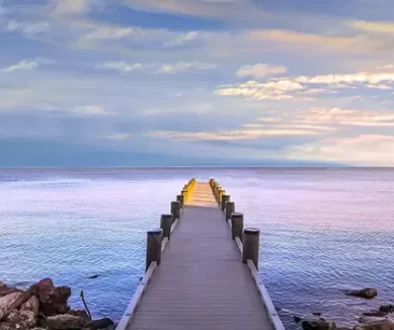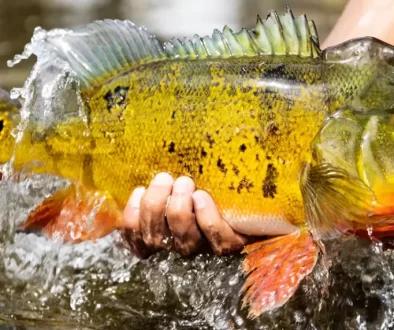Mahi Mahi Fly Fishing
Guide to Mahi Mahi Fly Fishing
For years, I’ve chased the thrill of saltwater Mahi Mahi fly fishing, always seeking that next electrifying fight. Nothing compares to the raw power of a mahi mahi on the fly. This isn’t some sleepy trout stream; this is a battle against a vibrant predator.
It’s a dance between angler and ocean, where quick wits and reflexes are key. My experience mahi mahi fly fishing at the Palapas Ventana Lodge was unforgettable. From that perfect basecamp, my adventure unfolded beautifully.
Table of Contents
Gearing Up for the Mahi Mahi Dance
Success in mahi mahi fly fishing begins with the right gear. We’re targeting fast, acrobatic predators, so strength and finesse are key. A 9 or 10-weight fly rod provides the backbone to manage those blistering runs.
A large arbor reel with a smooth drag is essential for a good fly cast. This isn’t your trout stream setup; saltwater demands heavier tackle.
Line and Leader: The Connection
A weight-forward tropical floating line helps you cast bulky flies into blustery conditions. A 20-30 pound test fluorocarbon leader provides invisibility in clear tropical water. Remember, we’re playing a game of deception; let your fly do the talking.
Saltwater Fly Fishing Apparel
Spending a day on the water, Saltwater or Freshwater. Protection from the elements of sun, wind, and cold is important. Saltwater Fly Fishing Apparel is great for the beach to hiking a 14er.

Performance Graphic Hoodie-Mahi Mahi Fly Fishing
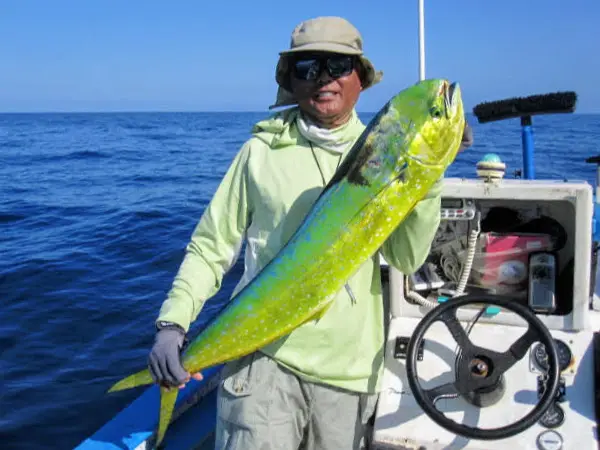
Mahi Mahi Fly Fishing Palapas Ventana
Mahi Mahi Fly Fishing is a great thill hooking in to the green acrobat. They will eat Electric Clouser Minnows I have found very readly.
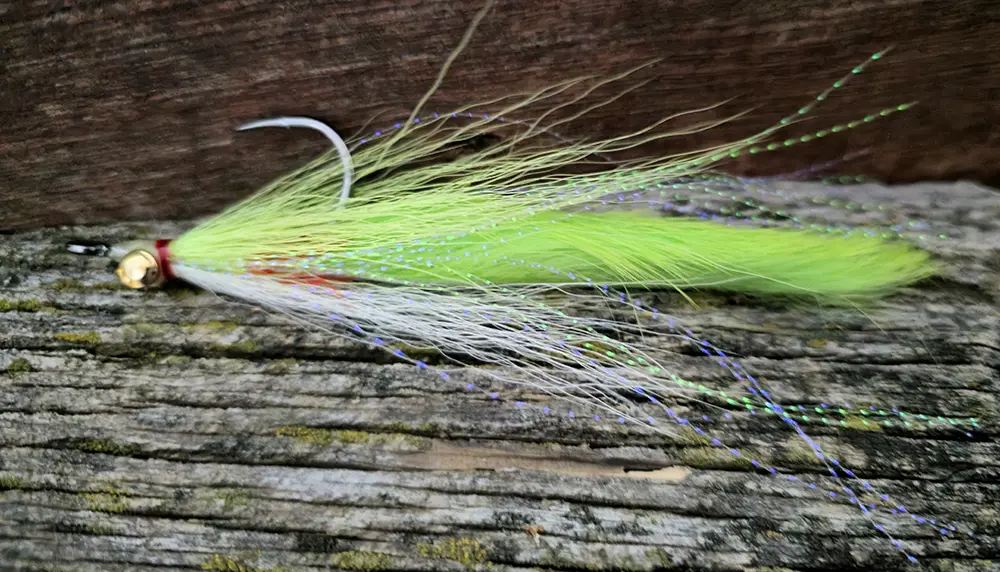
Chartreuse Clouser Minnows are a Great Pattern for Mahi Mahi Fly Fishing
Fly Selection: A Colorful Arsenal
Mahi mahi are attracted to vibrant colors. Flies imitating baitfish or squid often work well.
Patterns like Deceivers, streamers, and brightly colored squid imitations should fill your fly box. Don’t be afraid to experiment; an unusual pattern can sometimes yield surprising results.
Locating the Mahi Mahi: A Hunter’s Game
Finding mahi mahi is as thrilling as hooking them. They’re pelagic, inhabiting open waters. Locating these roamers takes a keen eye.
Reading the Ocean: Structure and Birds
Mahi mahi congregate near floating debris or structure, like weed lines, logs, or even pallets. These attract baitfish, which in turn, draw mahi mahi.
Look for flocks of birds like frigatebirds, terns, or gulls diving into the water. This signals a feeding frenzy below, as the birds and mahi mahi often target the same baitfish. Lobster pots are also good places to start.
Mahi Mahi prefer water temperatures between 70 – 85 degrees.
Top Mahi Mahi Flies
Here are the top flies for catching mahi mahi, not in any particular order:
A classic saltwater fly, the Deceiver is a staple in many mahi mahi fishermen’s boxes. Its sleek, streamlined body and vibrant colors make it irresistible to these aggressive fish.
Deceivers
Deceiver flies are a must-have for trophy mahi mahi fly fishing. These brightly colored flies imitate small baitfish. This makes them irresistible to hungry mahi. Their long flowing materials pulsate in the water. This creates a lifelike swimming action. It drives mahi wild! This is especially effective in the clear waters of Baja California.
The best part? Deceivers are easy to cast. Even beginners can get them out there with little effort. The design lets them slice through the air. This is helpful when targeting cruising mahi. You need to cover water quickly.
Here’s why deceivers work so well for mahi mahi:
- Bright Colors: Mahi are attracted to vibrant colors. Think chartreuse, pink, and orange. These colors stand out in the ocean. They mimic the flash of fleeing baitfish. Deceivers often have these colors.
- Long, Flowing Materials: The materials on a deceiver create a seductive action in the water. This pulsing motion mimics a wounded or panicked baitfish. This is something mahi can’t resist. They’re opportunistic predators, always looking for an easy meal.
- Weedless Design: While not all deceivers are weedless, many are. This lets you fish them around structure without getting snagged. This is a big plus when fishing for mahi. They like to hang around floating debris.
When fishing a deceiver, vary your retrieve. Sometimes a fast retrieve works best. This triggers a reaction strike. Other times, a slow, steady retrieve is more effective. This lets the fly sink a bit, imitating a struggling baitfish.
Consider these color combinations when targeting mahi mahi in Baja:
- Chartreuse and white
- Pink and white
- Blue and white
- Orange and yellow
From the Palapas Ventana Lodge, your guide will get you on the fish fast. They’ll know the best spots and techniques. They can help you pick the right deceiver. They’ll show you how to fish it effectively. Baja California offers an amazing opportunity for a saltwater fly fishing adventure
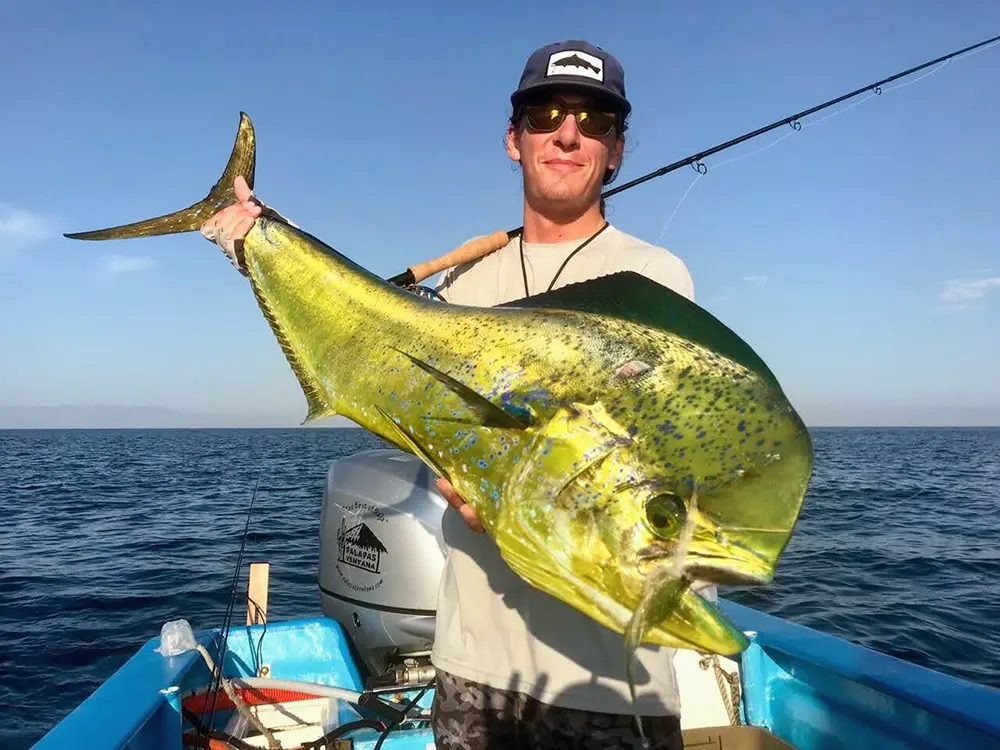
Fly Fishing Mahi Mahi
I one of those guys who wears legging under my shorts saltwater fly fishing. A UPF-50 sun protection patterned Mahi Mahi Leggings are comfortable, so your just naturally catch more fish.

Mahi Mahi Leggings
Streamers
A popular choice for mahi mahi, the Streamer fly imitates a small fish or squid, making it a great option for targeting these predators. Pseudo Secrets in Chartreuse White, and other baitfish patterns, only limited by your imagination.
Mahi mahi love to feed on squid, making the Squid Fly a top choice for anglers. Its soft, flexible body and enticing tentacles make it a deadly pattern. I have even used size 1 bright woolly buggers successfully.
Squid Fly
Mahi mahi are aggressive predators. This makes them a blast to catch on a fly rod. They love to crush a well-presented squid fly. These colorful fish are also known as dorado. They roam the warm waters of Baja California. This makes it a prime spot for a fly fishing adventure.
The Palapas Ventana Lodge is a sweet place to stay. You can explore all of Baja. Plus, it is perfect for trophy mahi mahi fly fishing. Experienced guides know these waters well. They can put you on the fish fast. The guides will help you hook into some true trophies. The peak season for mahi mahi is May through October. But you can find them year-round.
Squid flies are meant to imitate real squid. These are a favorite snack of mahi mahi fly fishing. The flies have a weighted head. This lets the fly sink quickly. The body is often made of colorful materials. These look like a real squid. Some common colors are pink, orange, and chartreuse. The fly should also have long flowing tentacles. This adds to the lifelike appearance.
When fly fishing for mahi mahi, use a fast retrieve. This gets the fish’s attention. You want to make the fly look like a fleeing squid. Mahi mahi often hunt in schools. So, if you hook one, there are likely more around. Be ready for some explosive action. They are strong fighters and can put up a great battle.
Baja California offers some amazing fly fishing. You can catch many different species. But, the mahi mahi is one of the most exciting. These fish are beautiful. They put up an incredible fight. And, they are delicious to eat. If you are looking for a thrilling fly fishing adventure, Baja is the place to be
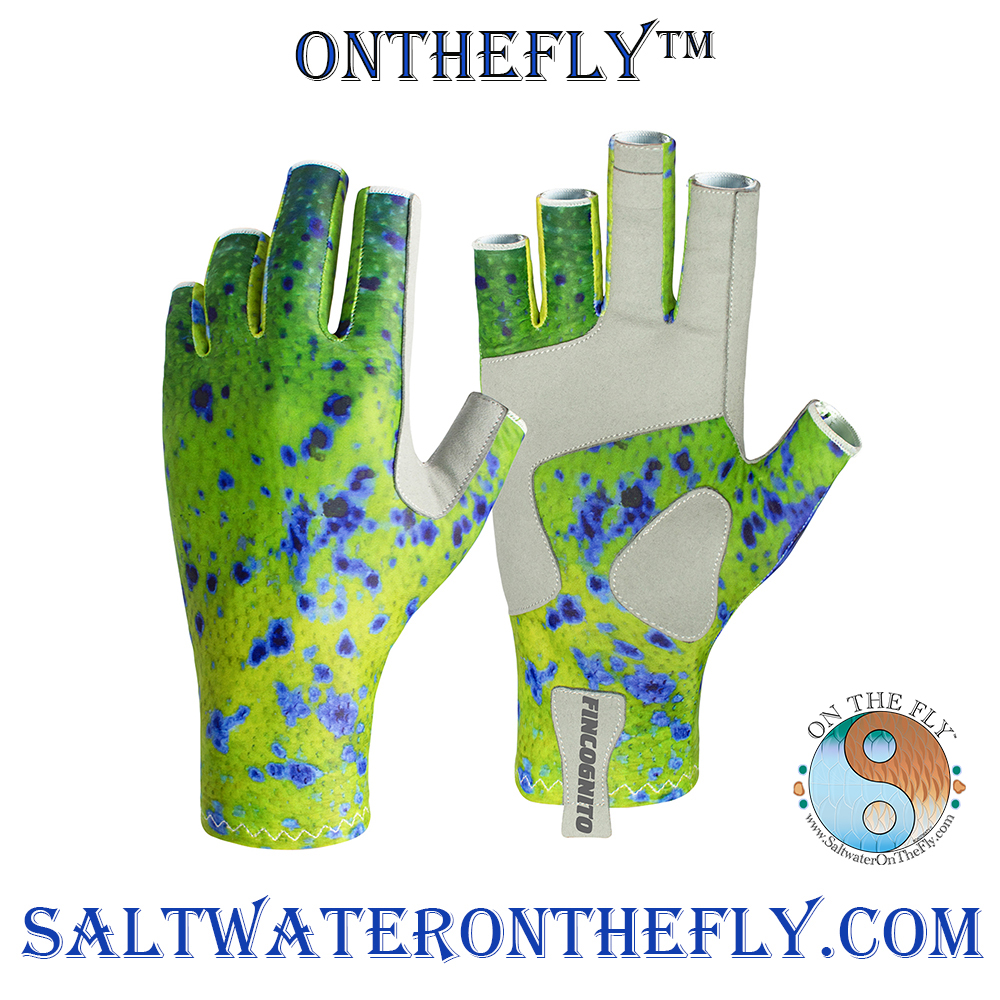
Mahi Mahi Saltwater Fly Fishing Gloves
Mahi Mahi Saltwater Fly Fishing Fingerless Gloves have a UPF-50 sun protection and a stripping finger guard. EP Baitfish Chartreuse-Pink for Mahi Mahi on the Fly.
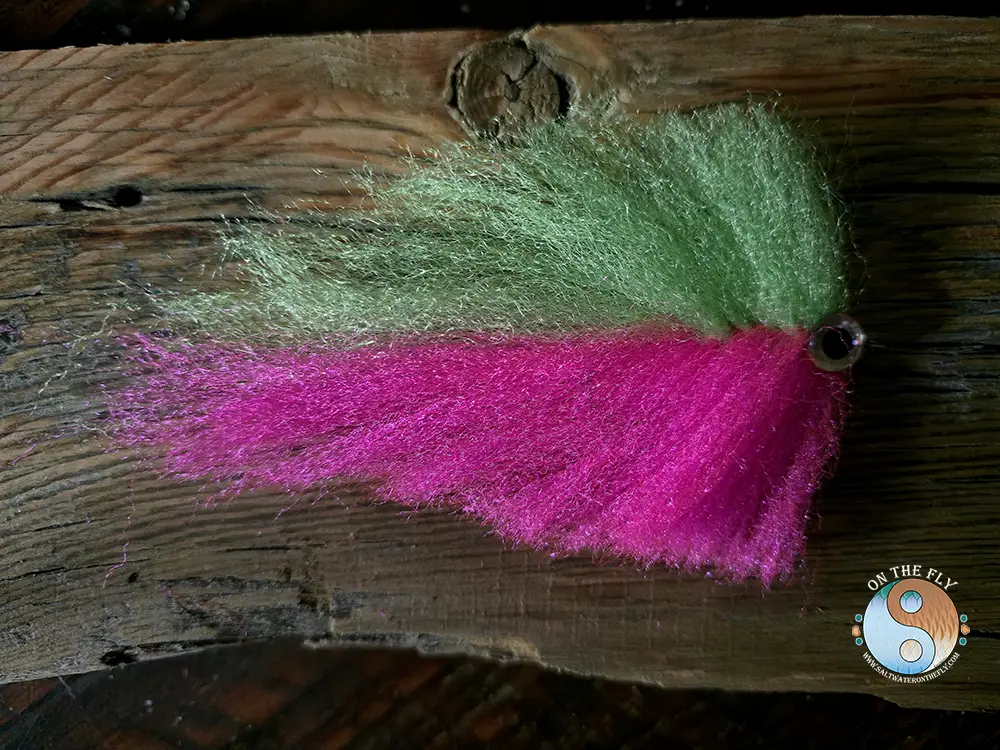
EP Baitfish 5 in Chartreuse Pink for Mahi Mahi Fly Fishing
Mahi Cruncher
A fly designed specifically for mahi mahi, the Mahi Cruncher features a bright, flashy body and a long, flowing tail. It’s a great option for targeting these aggressive fish.
The Mahi Cruncher fly was designed by renowned fly tyer and saltwater fishing expert, Blane Chocklett. Chocklett, a Virginia-based guide and fly tyer, created the Mahi Cruncher to target mahi mahi in the Gulf Stream off the coast of North Carolina. The fly’s unique design and materials make it a highly effective pattern for catching these aggressive fish.
The Mahi Cruncher fly was designed by renowned fly tyer and saltwater fishing expert, Blane Chocklett. Chocklett, a Virginia-based guide and fly tyer, created the Mahi Cruncher to target mahi mahi in the Gulf Stream off the coast of North Carolina. The fly’s unique design and materials make it a highly effective pattern for catching these aggressive fish.
Tying Instructions
Materials:
- Hook: Partridge 2/0 or 3/0 saltwater hook
- Thread: White or yellow monocord or thread
- Body: Chartreuse or pink holographic Flashabou or Semperfli Ice Straggle
- Tail: Long, flowing white or Violet Peral Crystallized Flash, silver Flashabou
- Wing: White or silver holographic Flashabou
- Eyes: Large, bright blue or pink glass or plastic beads
- Head: Clear or white epoxy or UV resin
Step-by-Step Tying Instructions:
- Start the thread: Begin by wrapping the thread around the hook shank, leaving a small space between the hook eye and the start of the thread.
- Add the body: Cut a 2-3 inch piece of chartreuse or pink holographic Flashabou and tie it in at the rear of the hook shank, leaving a small tag end. Wrap the Flashabou around the hook shank, forming a slender, tapered body.
- Add the tail: Cut a 4-5 inch piece of long, flowing white or silver Flashabou and tie it in at the rear of the hook shank, leaving a small tag end. Wrap the Flashabou around the hook shank, forming a long, flowing tail.
- Add the wing: Cut a 1-2 inch piece of white or silver holographic Flashabou and tie it in at the midpoint of the hook shank, leaving a small tag end. Wrap the Flashabou around the hook shank, forming a small, triangular wing.
- Add the eyes: Tie in two large, bright blue or pink glass or plastic beads at the front of the hook shank, leaving a small space between them.
- Form the head: Apply a small amount of clear or white epoxy or UV resin to the front of the hook shank, forming a smooth, rounded head
Flyingfish Fly
Mahi mahi often feed on flying fish, making this fly a great option for anglers. Its slender body and large eyes make it a convincing imitation.
Flyingfish Fly tying instructions and origins
Water Conditions: Warm and Clear
Focus your mahi mahi fly fishing in clear, warm water between 70-85 degrees. Warmer temperatures often mean higher fish activity. Clear water is essential for mahi mahi to see your fly, as sight plays a major role in their hunting.
The Fight: A Battle of Wits
With your fly chosen, and signs of active baitfish or birds present, prepare for an energetic fight. These fish will test your tackle and technique.
A 9 or 10-weight fly rod, a robust reel, and a proper drag setting make landing mahi mahi easier. Keep in mind the size mahi you are targeting may require different rods. Some anglers will fly fish with a 7-foot rod for smaller mahi and go as large as a 9-foot rod when fishing for larger fish. Be sure to choose a rod that can handle the pound test of your fishing line.
Mahi Mahi Fly Fishing: Technique and Tactics
Keep your rod tip high to maintain pressure on the hooked fish. A tight line is crucial. Use your rod’s flexibility to absorb powerful runs, making for a great fighting experience.
Mahi Mahi on the Fly: Baja California Hotspots
Baja California, known for its abundance of mahi mahi, is an ideal location. The Palapas Ventana Lodge makes a great base camp and specializes in trophy mahi mahi fly fishing, targeting larger fish.
Excellent fly fishing destinations also exist within the United States. The coasts of California, Florida, and other Gulf or Atlantic Coast states offer great opportunities.
Saltwater on the Fly Mahi Mahi Tarpon Yin/Yang 15 oz. mugs.

Mahi Mahi Tarpon Yin/Yang 15 oz. Mug
Top Mahi Mahi Flies: Proven Patterns
Choosing the right fly can be daunting. The table below lists top flies and provides information on their effectiveness. Understanding what makes them irresistible to mahi mahi can make all the difference in your fly fishing endeavors.
| Fly Name | Description | Why It Works |
|---|---|---|
| Deceiver | A versatile pattern mimicking baitfish, squid, or similar creatures. | Lifelike profile and action, attracts attention with bright colors. |
| Streamer | A longer fly with feather streamers that provide flash and attract predators. | Creates commotion, mimicking wounded baitfish. |
| Squid Fly | Soft and flexible, simulating a squid’s movements. | Matches mahi mahi’s diet, effective in squid-rich waters. |
| Ballyhoo Fly | Slim profile with a long, flowing tail. | Creates realistic swimming action when retrieved. |
| Flying Fish | Imitates flying fish residing near the surface. | Effective for topwater presentation when fish are schooling below diving birds. |
FAQs about mahi mahi fly fishing
Can you fly fish for mahi mahi?
Yes, mahi mahi fly fishing is considered by many to be incredibly enjoyable. Unlike larger game fish like marlin, mahi mahi don’t necessarily demand specialized tackle or extensive experience. Fly fishing for mahi mahi can even be a fun activity for children. It is important to match your fishing techniques to the size of fish. Fly time may be shorter if the size mahi mahi caught are larger.
What size fly rod for mahi mahi?
A 9 or 10 weight fly rod is usually sufficient for mahi mahi. Their average size doesn’t require the heavy tackle needed for deeper-dwelling game fish. This makes mahi mahi fishing accessible to a wider range of anglers. Make sure your fly rod is the correct size for casting flies during mahi season. Using a fly rod will help you make long casts during mahi madness.
Do mahi mahi eat flying fish?
Yes, mahi mahi eat various flying fish and similar baits, depending on the location and time of year. Consider what colors work best for smaller mahi and pound mahi sizes. Also, keep in mind if you’re using an intermediate line or if it is a chum fly for how you set up.
How far out do you have to go to catch a mahi mahi?
Mahi mahi inhabit open ocean near reefs, seaweed, and debris, typically within 10-30 miles of shore. Anglers looking for big mahi often fish further offshore. Many mahi are caught each year using conventional gear in addition to the fair share caught fly fishing. The fish tend to congregate where currents meet making finding a good location easier. Look for fast fish in the pound range while drifting, many of these fast fish are between 8-12 pounds, or around 20 inches long.
Conclusion of Mahi Mahi Fly Fishing
Mahi mahi fly fishing is more than a sport; it’s a connection to nature. These vibrant fish offer an exhilarating fight, rewarding anglers with a memorable experience. Their spectacular colors and challenging runs, create a symphony of saltwater fly fishing excitement.
If you prefer fishing closer to shore, try targeting Jack Crevalle. Similar fly gear works for both. These tips will make your next fly fishing adventure even better. Get ready to create lifelong memories.
